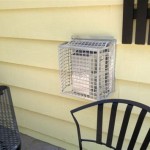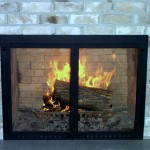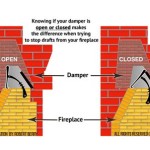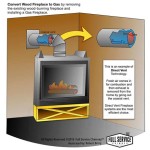Stone Fireplace Mantels and Surrounds: A Timeless Touch of Elegance
Stone fireplace mantels and surrounds have been a prominent feature of homes for centuries, offering not only a functional element for containing fire but also a significant design statement. Their enduring popularity stems from the inherent beauty and durability of natural stone, coupled with the versatility to complement a wide range of architectural styles. From rustic cottages to modern residences, stone fireplaces bring warmth, character, and a touch of timeless elegance to any living space.
The selection of a stone fireplace mantel and surround is a significant decision, impacting the overall aesthetic of a room. It involves considering factors such as the type of stone, the design style, the dimensions of the fireplace, and how the new surround will integrate with existing décor. Understanding the various options available and their characteristics is crucial for achieving a result that is both visually appealing and functionally sound.
Understanding the Variety of Stone Types
The term "stone" encompasses a vast array of materials, each with its unique visual qualities and physical properties. Common choices for fireplace mantels and surrounds include, but are not limited to, marble, granite, limestone, slate, and fieldstone. Marble, known for its veining and polished surface, lends an air of sophistication and luxury. Granite, celebrated for its durability and resistance to heat, offers a more robust and contemporary aesthetic. Limestone, with its subtle variations in color and texture, provides a classic and versatile look. Slate, distinguished by its layered appearance and earthy tones, adds a rustic and natural element. Fieldstone, typically sourced directly from the landscape, brings an organic and textured feel, often found in more traditional or rural settings.
The choice of stone type significantly influences the overall design. Lighter stones, like marble or light-colored limestone, can brighten a room and create a sense of spaciousness. Darker stones, such as granite or slate, tend to add depth and drama. The texture of the stone also plays a role; a smooth, polished surface reflects light and achieves a more refined look, while a rough or textured surface creates a more rustic and informal atmosphere. Ultimately, the selection of stone should align with the desired aesthetic and complement the existing architectural details of the home.
Beyond aesthetics, the physical properties of each stone type also warrant consideration. Granite, for example, is highly resistant to heat and scratching, making it a practical choice for a fireplace surround that will be exposed to high temperatures and potential wear and tear. Marble, while beautiful, is more porous and may require sealing to protect it from stains. Limestone, being relatively soft, is easier to shape and carve, allowing for more intricate designs. Understanding these properties helps ensure the chosen stone is not only visually appealing but also durable and suitable for its intended use in a fireplace setting.
Design Styles and Architectural Integration
Stone fireplace mantels and surrounds are available in a wide range of design styles, catering to diverse architectural preferences. Traditional designs often feature ornate carvings, intricate detailing, and classical motifs. These designs typically incorporate elements like columns, corbels, and decorative panels, reflecting the grandeur of historical periods. Modern designs, on the other hand, tend to be more minimalist and streamlined, often emphasizing clean lines, geometric shapes, and a focus on the natural beauty of the stone itself. Transitional designs bridge the gap between traditional and modern, incorporating elements of both styles to create a balanced and harmonious look.
The choice of design style should ideally complement the existing architectural style of the home. A traditional mantel and surround would be a natural fit for a Victorian or Georgian-style house, while a modern design would be more appropriate for a contemporary or mid-century modern residence. However, it is also possible to create a visually interesting contrast by incorporating a design style that is slightly different from the home's overall architecture. For example, a rustic stone fireplace could add a touch of warmth and character to a modern loft space.
Furthermore, the scale and proportions of the fireplace mantel and surround should be carefully considered in relation to the size of the room and the dimensions of the fireplace. A large, imposing mantel might overwhelm a small room, while a small, understated mantel might get lost in a large space. The height and width of the surround should also be proportional to the size of the firebox, creating a balanced and visually appealing composition.
Installation and Maintenance Considerations
The installation of a stone fireplace mantel and surround is a complex process that typically requires the expertise of a professional mason or contractor. Due to the weight and complexity of working with stone, proper installation is crucial for ensuring the stability and safety of the structure. The installation process typically involves preparing the fireplace opening, securing the stone components with mortar or adhesive, and ensuring that the mantel is properly supported. Proper ventilation and clearances around the firebox are also essential for ensuring safe and efficient operation of the fireplace.
Once installed, stone fireplaces require regular maintenance to preserve their beauty and longevity. The type of maintenance required will vary depending on the type of stone and the sealant applied. Generally, it is recommended to clean the stone regularly with a mild detergent and water to remove dust and grime. Avoid using harsh chemicals or abrasive cleaners, as these can damage the stone surface. For porous stones like marble or limestone, it may be necessary to apply a sealant periodically to protect the stone from stains and water damage.
In addition to regular cleaning, it is also important to inspect the fireplace and surround periodically for any signs of damage or deterioration. Cracks, chips, or loose mortar should be repaired promptly to prevent further damage. It is also essential to ensure that the fireplace is properly ventilated and that the chimney is regularly cleaned to prevent the buildup of creosote, which can pose a fire hazard. By following these maintenance guidelines, homeowners can ensure that their stone fireplace mantel and surround will remain a beautiful and functional focal point of their home for many years to come.

Newport Cast Stone Fireplace Surround Oregon Castings And Design

Verona Cast Stone Fireplace Surround Oregon Castings And Design

Discover The Finest Cast Stone Fireplace Mantels Near You

Manhattan Cast Stone Fireplace Mantel Old World Stoneworks

Contemporary Cast Stone Fireplace Mantel

Discover The Finest Cast Stone Fireplace Mantels Near You

Home Dracme

Fireplace Mantels Surrounds Cast Stone Masonry

Cast Stone Fireplaces So Much Better With Age

Monaco Cast Stone Fireplace Surround Oregon Castings And Design








